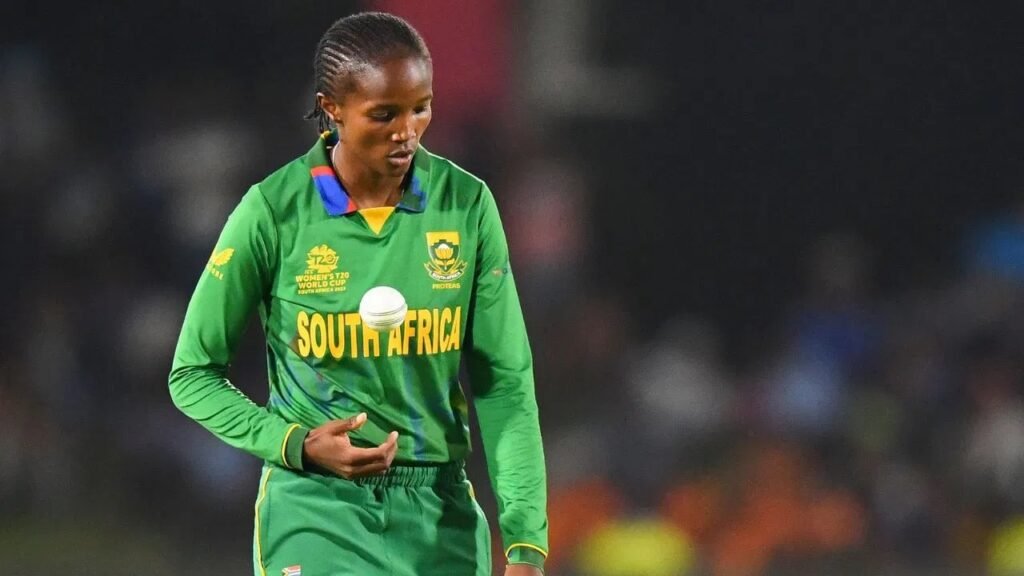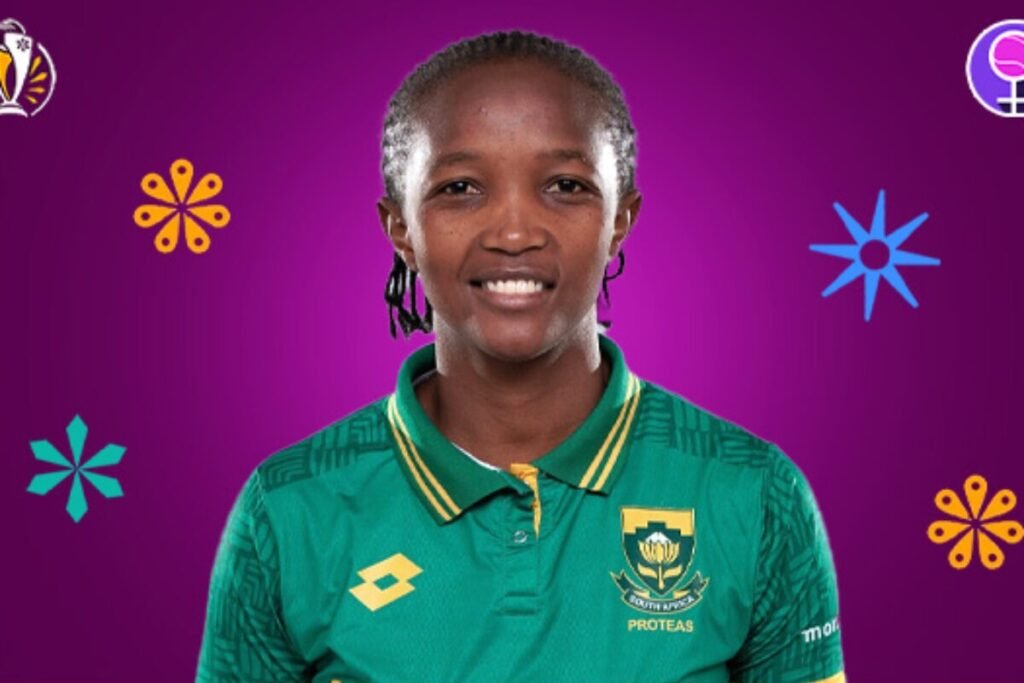In one of the most dominant displays of the ICC Women’s Cricket World Cup 2025, South Africa crushed Pakistan by 150 runs under the Duckworth-Lewis-Stern (DLS) method in Colombo. Despite rain delays, Laura Wolvaardt’s composed 90, Marizanne Kapp’s all-around brilliance, and Ayabonga Khaka’s disciplined bowling sealed South Africa’s fifth consecutive World Cup win, sending Pakistan out of semifinal contention.
South Africa, already semifinal-bound, came in full of confidence after four straight wins. They posted a towering total of 312 for nine from 40 overs before skittling Pakistan for just 83 in 20 overs. Pakistan, winless so far in the tournament, saw their campaign end prematurely as heavy rain and South African dominance left them no chance of recovery.
Ayabonga Khaka’s Impact
Ayabonga Khaka returned to the XI in place of Masabata Klaas, and her influence was immediate. In the second over of Pakistan’s chase, Khaka dismissed Muneeba Ali with a perfect seaming delivery that set the tone for a relentless bowling attack. Her economical spell of 1 for 14 in four overs built pressure upfront, forcing Pakistan’s batters into survival mode before Kapp and Shangase dismantled the middle order.
Khaka’s ability to generate movement in humid Colombo conditions illustrated her value to South Africa’s pace attack. Her early breakthrough ensured Pakistan’s batting never settled. It was another performance that reaffirmed her reputation as one of the most reliable seamers in world cricket, consistently delivering under pressure.
Wolvaardt, Kapp, and Luus Lead Batting Charge
After being put in to bat by Pakistan captain Fatima Sana, South Africa’s top order delivered a batting masterclass. Skipper Laura Wolvaardt looked flawless in her 90 off 82 balls, anchoring the innings with elegant drives and precise shot placement. Sune Luus (61) joined her for a crucial 118-run second-wicket partnership that stabilised the Proteas after an early scare when Tazmin Brits fell for a duck.
Marizanne Kapp then added a quickfire 68 off 45 balls, combining with Wolvaardt to accelerate the scoring rate before ruthless finishing from Nadine de Klerk (41 off 16) lifted South Africa to a record World Cup total of 312 in just 40 overs. The innings perfectly showcased South Africa’s balance, solidity at the top, creativity in the middle, and explosiveness at the end.
Pakistan’s Struggles Continue
Pakistan’s chase quickly fell apart under the combined pressure of South Africa’s pace and accuracy. Muneeba Ali’s early dismissal by Khaka triggered a collapse as Kapp ripped through the top order. At 35 for 4, Pakistan were all but out before rain returned for another delay. Even after play resumed with a revised target of 234 in 20 overs, Pakistan failed to adapt, crawling to 83 for 7 by the end of the innings.
Sidra Nawaz top-scored with 22 not out, but no batter displayed the intent or technical resilience needed against Khaka and her fellow bowlers. Pakistan’s bowling unit, led by Nashra Sandhu and Sadia Iqbal, showed some spirit earlier but lacked consistency, conceding nearly eight runs an over. Their captain, Fatima Sana, endured a tough outing, leaking 69 runs in eight overs.

A Team of Momentum and Belief
This victory cemented South Africa’s position at the top of the group standings with 10 points from six matches, overtaking Australia and England, who were set to meet in Indore the next day. For skipper Laura Wolvaardt, the win was another chapter in her team’s story of redemption after an embarrassing collapse against England earlier in the tournament.
South Africa’s consistency lies in its adaptability. Against Pakistan, they showed not only their batting depth but also bowling versatility, with Khaka, Kapp, and Shangase all contributing effectively. Their fielding, too, remained sharp, a reflection of the discipline coach Hilton Moreeng has instilled in the side.
From Comeback to Contender
Ayabonga Khaka’s personal comeback mirrored South Africa’s broader narrative. Dropped against New Zealand due to rotation, she returned to the lineup with purpose. Her seamless integration back into the team showed how South Africa’s bowling depth continues to strengthen heading into the knockout stages. For Khaka, this wasn’t just another appearance; it was a reaffirmation of trust and her ability to deliver in high-pressure matches.
Her controlled pace, subtle variations, and calm demeanour contrasted beautifully with Kapp’s aggression. That partnership with the ball has become the vital axis of South Africa’s recent dominance, a blend of patience and power that is delivering results.
Pakistan’s Missed Chances
For Pakistan, the defeat was a microcosm of their World Cup campaign. Promising starts with the ball often unravelled under scoreboard pressure. The decision to bowl first on a surface that flattened under the lights didn’t help, but the lack of middle-order resistance sealed their fate. Even with Sidra Ameen and Natalia Pervaiz in form coming into the match, they struggled against Khaka’s seam and Kapp’s bounce.
Pakistan’s fielding lapses, notably dropped catches off Wolvaardt early, compounded their troubles. Coach Mohtashim Rasheed lamented the team’s inability to sustain intensity, saying afterwards that the side needed “a new level of professionalism” to compete at this stage.
South Africa’s Path Forward
With their spot in the semifinals secured, South Africa’s main focus now shifts to fine-tuning their combinations. Marizanne Kapp and Laura Wolvaardt have been instrumental, but it’s players like Khaka, Shangase, and de Klerk who are turning them into a multidimensional side. Their next challenge lies in maintaining momentum against stronger semifinal opponents, such as Australia or England.
Khaka’s performance, though statistically modest, holds symbolic weight. Her early breakthrough choked Pakistan’s confidence and underscored how each member of this South African unit has embraced a specific role within the broader mission to claim their first-ever Women’s World Cup crown.

